Fashion of the 60s Hippies, A cultural change known as the hippie movement evolved in the 1960s, bringing with it a unique and revolutionary sense of fashion that questioned social conventions and placed an emphasis on self-expression. Hippie clothing from the 1960s was more than simply a trend; it was a manifestation of their beliefs and a method to rebel against social norms. The fascinating world of 1960s hippie dress is explored is discussed along with its iconic elements and enduring effect.
1. The Flower Child Attire: A Symbol of Peace
The flower child look became synonymous of one of the Fashion of the 60s Hippies. Flowing maxi dresses adorned with vibrant floral patterns were a hallmark of this era.
Bell sleeves were commonly worn, which showed the 1960 era ideas of fun and carefree.
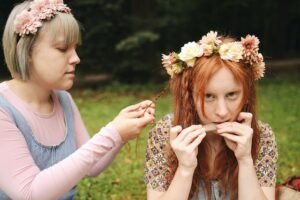
2. Bell Bottoms: Defying Convention
Bell-bottom pants were one of the most distinguishable features of 60s fashion. They disobeyed the conventional slim-fit fashions of earlier decades with their flared bottoms. These pants are a challange for traditional values. Paired with fringed vests or tie-dye shirts, bell bottoms celebrated individuality and were embraced by both men and women.
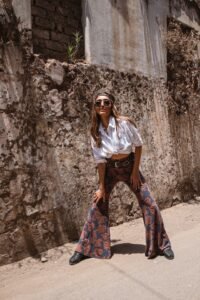
3. Tie-Dye Revolution: Colorful Individualism
Tie-dye was more than just a 1960 fashion craze; it was a method to express unique. Hippies created their own tie-dye designs, resulting in special unique, vibrant clothing that represented their reject to mass produced items. Each tie-dye pattern was a visual representation of the wearer’s distinct personality and beliefs.

4. Fringe Fever: Energy and Movement
Jackets, vests, wallets, and other clothing pieces all featured fringe accents.The freedom and effortless elegance of the movement were emphasized by the fringe’s slow motion. As wearers danced to the rhythms of music festivals, the fringe would come alive, creating an aura of movement and energy that perfectly encapsulated the spirit of the times .

5. Bohemian Accessories: Embracing Nature
The use of accessories was crucial in Fashion of the 60s Hippies. Headbands made of flowers or beads were worn as crowns of nature, celebrating the earth’s beauty. Mismatched earrings, stacked bracelets, and intricately designed belts added a touch of bohemian charm. These items served as ties to the environment around them rather than only being ornamentation.

6. Prints of Psychedelic: The Fashion Industry
Psychedelic prints emerged as an artistic and mind-bending element of hippie fashion. Bold and vibrant patterns adorned shirts, dresses, and even pants. These images reflected the intense thoughts and carried on the alternative culture research into changed awareness.
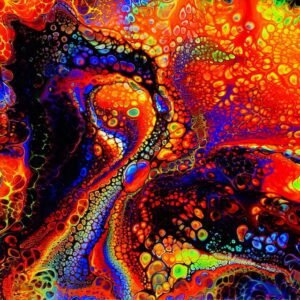
7. Denim Love: Jeans and Jackets
A blank canvas for development was provided by denim. Patches, embroidery, and love signs were commonly put on jeans to make them into wearable pants of art. Denim jackets sent messages of revolt and support for social movements when they were worn with deliberate roughness. Those are the times when denim jeans considered as labour fashion of 60s hippies but this thing is still trending.
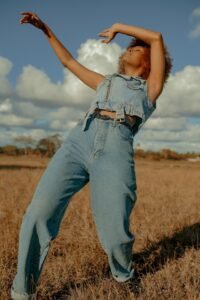
8. Natural Fibers: Choosing sustainably
Hippies preferred natural textiles like cotton, linen, and hemp over synthetic ones. Their choice was consistent with their commitment to sustainability and environmental responsibility. Their attire had an earthy, grounded vibe thanks to the rough textures of these textiles.

9. The Hair Revolution: Long and Unkempt
The sign of disobedience against societal grooming norms has become hair. Both men and women grew their hair long, celebrating its natural texture. The new appearance questioned conventional ideas of beauty and gave off a sense of disobedience and ethics.

10. Low-Key Makeup: Accepting Nature’s Beauty
In contrast to the heavy makeup of previous decades, hippies favored a more natural and minimal approach. By allowing them to be themselves, this strengthened their rejection of artificiality and simplicity.
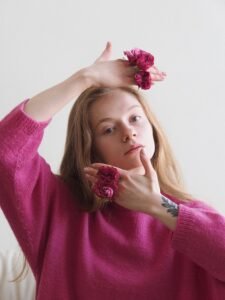
11. Cultural Fusion: worldwide influences
Hippie clothing was influenced by a wide range of international cultures. Kaftans, dashikis, and other ethnic clothes were majorly widespread, promoting unity and respect for various cultural customs dresses.
12. Music Festival Chic: Fashion as Performance
Music festivals like Woodstock were more than just gatherings; they were platforms for fashion as performance art. The festival grounds were transformed into a dazzling tapestry of colors, textures, and personalities as attendees dressed in their most expressive ensembles.
13. DIY Ethic: Creating a Unique Identity
Hippies adopted the DIY mentality and made their own clothing and accessories. They were able to create a better connection with their clothing and use each piece as a blank canvas for their original thoughts
14. Legacy in Modern Fashion:Reflections of the Past
The spirit of 60s hippie fashion continues to influence contemporary style. Frequent resurgences of fringe, bell bottoms, and tie-dye pay homage to a time when originality and free-spiritedness were valued.
15. Conclusion: Symbol of Freedom
Hippie fashion in the 1960s was more than a passing trend; it represented a way of life that embraced community, individuality, and rebellion. These fashion innovators violated the laws of the time through their flower child gowns, bell-bottomed pants, masterpieces of tie-dye, and other inventions, leaving behind a legacy that still has an impact on newer generations.
FAQs About 60s Hippie Fashion
Q1: Were all hippies in the 60s dressed the same?
A: Not at all! Since hippie fashion emphasized individualism, a broad variety of styles and expressions emerged.
Q2: Did 60s hippie fashion have any political significance?
A: Yup. Political action and hippie style were interwoven and reflected anti-establishment beliefs.
Q3: How did the flower child attire become a symbol of peace?
A: The flower child attire’s vibrant and natural elements represented values of love, peace, and harmony with nature.
Q4: What role did music festivals play in shaping hippie fashion?
A: Attendees of music festivals were encouraged to show off their most original and unusual clothes as a means of self-expression.
Q5: Is tie-dye still popular today?
A: Yes, tie-dye periodically makes comebacks in fashion, keeping the spirit of the 60s alive.